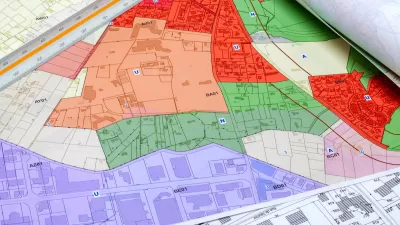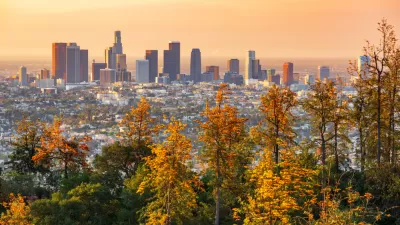New research analyzing carbon emissions throughout the life cycle of buildings shows that high-rises create more carbon emissions than dense, low-rise developments.

Researchers Ruth Saint and Francesco Pomponi shares news of their new study asserting that dense, low-rise buildings are better for the environment than high-rises. Despite their ability to drastically increase density in urban areas, high-rise buildings, according to the study, create more carbon emissions down the line. This is largely due to what Saint calls "embodied" carbon emissions, "all the hidden, behind-the-scenes carbon produced during the extraction, production, transport and manufacture of raw materials used to construct a building, plus any produced during maintenance, refurbishment, demolition or replacement." This overlooked aspect of a development's overall carbon footprint, experts argue, must be emphasized in order to reduce emissions in cities.
Our findings show that high-density low-rise cities, such as Paris, are more environmentally friendly than high-density high-rise cities, such as New York. Looking at the fixed population scenarios, when moving from a high-density low-rise to a high-density high-rise urban environment, the average increase in whole life-cycle carbon emissions is 142%.
With countries targeting aggressive emissions reduction goals, Saint argues that urban planners and developers must use this knowledge to advance more sustainable building practices that reduce the carbon footprint of cities while continuing to accommodate growing urban populations.
FULL STORY: Cities and climate change: why low-rise buildings are the future – not skyscrapers

Alabama: Trump Terminates Settlements for Black Communities Harmed By Raw Sewage
Trump deemed the landmark civil rights agreement “illegal DEI and environmental justice policy.”

Study: Maui’s Plan to Convert Vacation Rentals to Long-Term Housing Could Cause Nearly $1 Billion Economic Loss
The plan would reduce visitor accommodation by 25% resulting in 1,900 jobs lost.

Why Should We Subsidize Public Transportation?
Many public transit agencies face financial stress due to rising costs, declining fare revenue, and declining subsidies. Transit advocates must provide a strong business case for increasing public transit funding.

Paris Bike Boom Leads to Steep Drop in Air Pollution
The French city’s air quality has improved dramatically in the past 20 years, coinciding with a growth in cycling.

Why Housing Costs More to Build in California Than in Texas
Hard costs like labor and materials combined with ‘soft’ costs such as permitting make building in the San Francisco Bay Area almost three times as costly as in Texas cities.

San Diego County Sees a Rise in Urban Coyotes
San Diego County experiences a rise in urban coyotes, as sightings become prevalent throughout its urban neighbourhoods and surrounding areas.
Urban Design for Planners 1: Software Tools
This six-course series explores essential urban design concepts using open source software and equips planners with the tools they need to participate fully in the urban design process.
Planning for Universal Design
Learn the tools for implementing Universal Design in planning regulations.
Smith Gee Studio
Alamo Area Metropolitan Planning Organization
City of Santa Clarita
Institute for Housing and Urban Development Studies (IHS)
City of Grandview
Harvard GSD Executive Education
Toledo-Lucas County Plan Commissions
Salt Lake City
NYU Wagner Graduate School of Public Service





























